Luxor’s Valley of the Kings is one of the most iconic and historically rich archaeological sites in the world. Nestled on the west bank of the Nile River in Egypt, this ancient necropolis was the final resting place for many of Egypt’s pharaohs and noblemen of the New Kingdom period (1550-1070 BCE). The allure of Luxor’s Valley of the Kings lies not only in its historical significance but also in its intricate tombs, stunning artwork, and the mystery that surrounds it. As an essential destination for any traveler interested in history and archaeology, Luxor’s Valley of the Kings offers an unparalleled glimpse into the past.
The Historical Significance of Luxor’s Valley of Kings
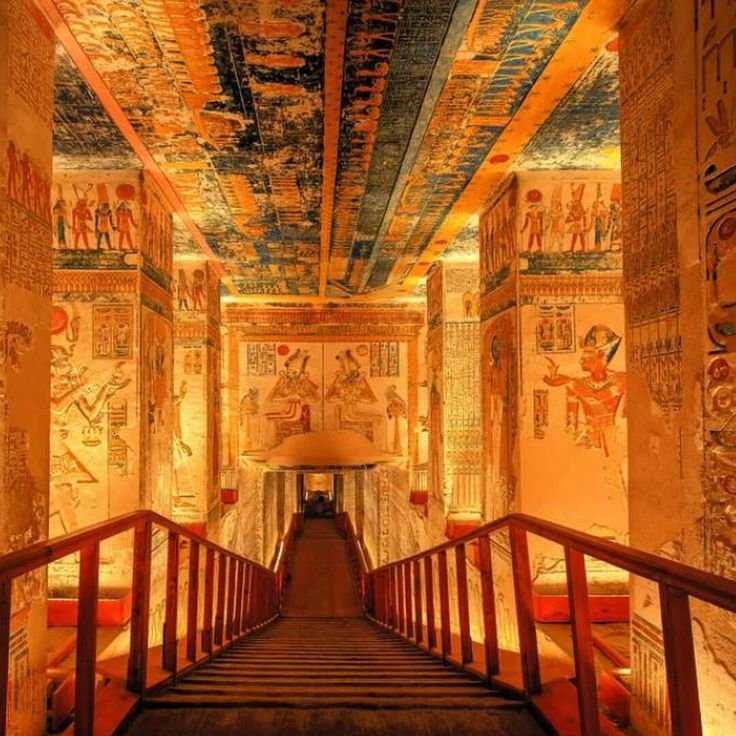
The decision to build tombs in Luxor’s Valley of the Kings was driven by a need for security and secrecy. Prior to the New Kingdom, pharaohs were buried in pyramids, which were highly visible and often plundered by tomb robbers. The secluded location of Luxor’s Valley of the Kings, hidden in a remote valley surrounded by steep cliffs, provided a more secure resting place for deceased kings and their treasures. The valley became the principal burial place for pharaohs, and it includes tombs for such illustrious rulers as Tutankhamun, Ramses II, and Seti I.
1. Architectural Innovation and Design
The tombs in Luxor’s Valley of the Kings represent a significant departure from the pyramid structures of earlier periods. The architects of the New Kingdom designed these tombs to be hidden and less conspicuous, embedding them deep into the limestone cliffs. The tombs typically consist of multiple chambers, including corridors, antechambers, and burial chambers, all adorned with intricate hieroglyphics and vibrant paintings.
Each tomb is unique, reflecting the reign and personal tastes of the pharaoh it was built for. The walls of these tombs are covered with scenes from the “Book of the Dead,” the “Book of Gates,” and other funerary texts, which were intended to guide the pharaohs through the afterlife. These texts and images provide invaluable insights into the religious beliefs and practices of ancient Egypt.
2. The Rediscovery and Excavation
The rediscovery of Luxor’s Valley of the Kings is a story filled with intrigue and adventure. Although the valley had been known to locals for centuries, it was not until the early 19th century that European explorers began to systematically excavate the area. The most famous discovery was made by British archaeologist Howard Carter in 1922 when he uncovered the virtually intact tomb of Tutankhamun. This discovery sent shockwaves around the world and brought Luxor’s Valley of the Kings into the global spotlight. The wealth of artifacts found within the tomb provided invaluable insights into ancient Egyptian culture, art, and burial practices.
Explore Egypt and its most attractive Sights which include Cairo, Aswan, and Luxor Overland Trip. in 9 Days – Book Now: Timeless Egypt Overland
3. Notable Tombs in the Valley
Several tombs in Luxor’s Valley of the Kings stand out for their historical significance and artistic merit.
– Tomb of Tutankhamun (KV62): Perhaps the most famous tomb, it was discovered largely intact, containing a wealth of artifacts including the iconic gold mask of Tutankhamun.
– Tomb of Seti I (KV17): Known for its extensive and well-preserved wall paintings, this tomb is one of the longest and most elaborate in the valley.
– Tomb of Ramses VI (KV9): Features an astronomical ceiling adorned with star maps and constellations, showcasing the Egyptians’ knowledge of astronomy.
– Tomb of Horemheb (KV57): Notable for its detailed and colorful wall reliefs that depict scenes of the pharaoh’s military victories and interactions with gods.
4. Ongoing Research and Discoveries
Luxor’s Valley of the Kings continues to be a site of active archaeological research. New discoveries and technological advancements regularly provide fresh insights into the history and culture of ancient Egypt. The use of modern techniques, such as ground-penetrating radar and 3D scanning, has allowed archaeologists to uncover previously hidden tombs and chambers, further enriching our understanding of this ancient necropolis.
The Architecture and layout of the Tombs
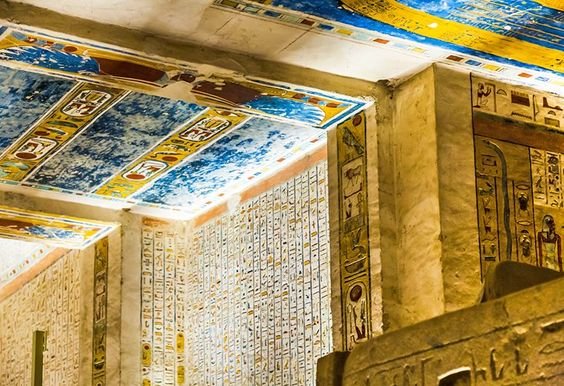
Luxor’s Valley of the Kings is home to over 60 tombs, each with its unique architectural features and artistic embellishments. The tombs were carved into the limestone rock of the valley and typically consist of a series of corridors, chambers, and burial chambers. The walls of these tombs are adorned with elaborate paintings and hieroglyphics depicting scenes from Egyptian mythology, the afterlife, and the pharaoh’s journey to the underworld.
One of the most impressive tombs in Luxor’s Valley of the Kings is that of Seti I, which is renowned for its exquisite decorations and well-preserved wall paintings. The tomb of Ramses VI is another notable example, featuring an astronomical ceiling adorned with star maps and constellations.
Book Now: Wonders of Egypt & Nile Cruise
The Mystery of Tutankhamun’s Tomb
Tutankhamun’s tomb, known as KV62, is perhaps the most famous tomb in Luxor’s Valley of the Kings. Discovered by Howard Carter, it is one of the best-preserved and most intact tombs ever found in the valley. Despite its relatively small size compared to other royal tombs, it contained a wealth of artifacts, including the iconic gold mask of Tutankhamun, which has become a symbol of ancient Egypt.
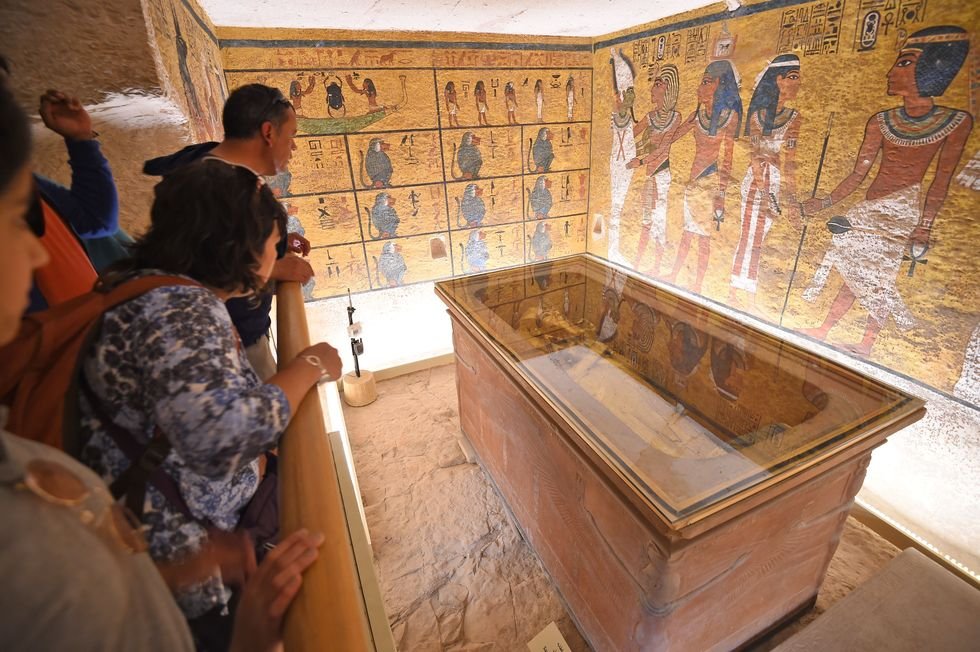
The discovery of Tutankhamun’s tomb has fueled many mysteries and theories. One of the most intriguing is the so-called “Curse of the Pharaohs,” which suggests that those who entered the tomb would be cursed with bad luck or death. While the curse has been largely debunked, the story adds to the mystique and allure of Luxor’s Valley of the Kings.
Conservation and Preservation Efforts
Preserving Luxor’s Valley of the Kings is a significant challenge due to factors such as tourism, environmental conditions, and natural deterioration. The Egyptian government, along with international organizations, has undertaken various conservation projects to protect the tombs and their invaluable contents. Efforts include installing climate control systems, creating replicas of the most visited tombs, and restricting access to certain areas to prevent further damage.
Visiting Luxor’s Valley of the Kings
For travelers, a visit to Luxor’s Valley of the Kings is a journey back in time. The valley is located near the city of Luxor, which is easily accessible by air, rail, or road. Visitors can explore the tombs, admire ancient art, and gain a deeper understanding of Egypt’s rich history. The site is part of the larger Theban Necropolis, which also includes the Valley of the Queens, the Temple of Hatshepsut, and the Colossi of Memnon.
When planning a visit, it is essential to allocate enough time to explore the various tombs and nearby attractions. Guided tours are highly recommended, as they provide valuable insights into the history and significance of the site. Additionally, visitors should be prepared for the hot and dry climate of the region, with appropriate clothing, hydration, and sun protection.
The Cultural Impact of Luxor’s Valley of the Kings
The cultural impact of Luxor’s Valley of the Kings extends far beyond Egypt. The discoveries made in the valley have influenced art, literature, and popular culture worldwide. The fascination with ancient Egypt has inspired countless books, movies, and documentaries, contributing to a broader understanding and appreciation of this ancient civilization.
One of the most significant cultural legacies of Luxor’s Valley of the Kings is its contribution to our knowledge of ancient Egyptian burial practices and beliefs about the afterlife. The tombs and their contents provide a detailed record of how the Egyptians prepared for the journey to the underworld, including the use of funerary goods, mummification techniques, and the rituals performed to ensure a safe passage.
The Legacy of Luxor’s Valley of the Kings
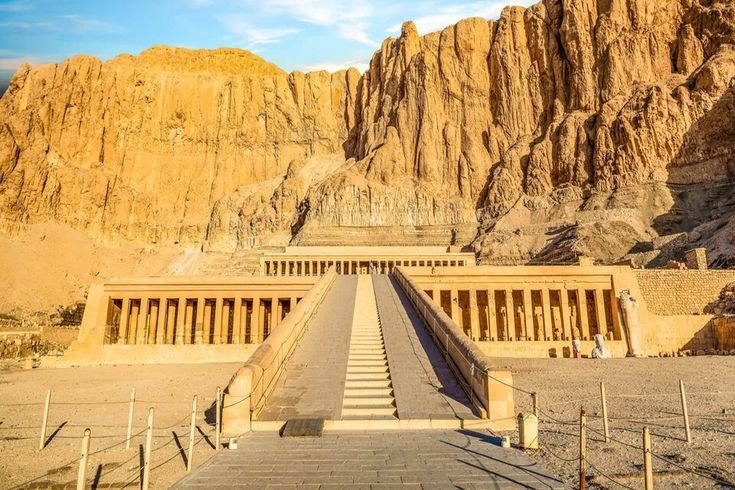
The legacy of Luxor’s Valley of the Kings is enduring and continues to captivate people around the world. The site remains an active area of archaeological research, with new discoveries and insights emerging regularly. These ongoing efforts help to deepen our understanding of ancient Egyptian history and culture.
Moreover, Luxor’s Valley of the Kings serves as a reminder of the ingenuity and artistry of the ancient Egyptians. The tombs stand as a testament to their architectural skills, their religious beliefs, and their quest for immortality. For modern visitors, the valley offers a unique opportunity to connect with the past and to marvel at the achievements of one of the world’s greatest civilizations.
Quick Facts About Luxor’s Valley of the Kings
1. 63 Tombs: Houses the tombs of various pharaohs, queens, and nobles from the New Kingdom period.
2. Intricate Wall Carvings: Features detailed carvings depicting religious scenes, mythological tales, and daily Egyptian life.
3. Vibrant Paintings: The tombs are adorned with colorful paintings showcasing ancient Egyptian artistry.
4. Tomb of Tutankhamun: Discovered by Howard Carter in 1922, it remains one of the most significant archaeological finds.
5. Global Attention: The discovery of Tutankhamun’s tomb brought worldwide focus to the Valley of the Kings.
Why Was Luxor’s Valley of the Kings Built? 
The ancient Egyptians’ belief in the afterlife was a significant reason behind the construction of tombs in Luxor’s Valley of the Kings. They believed that mummification and burial with possessions ensured a safe journey to the afterlife. Tombs included furniture, clothes, jewelry, and even food and drink. High-ranking individuals, including pharaohs and queens, were also buried with their favored companions and servants.
Exploring Luxor’s Valley of the Kings 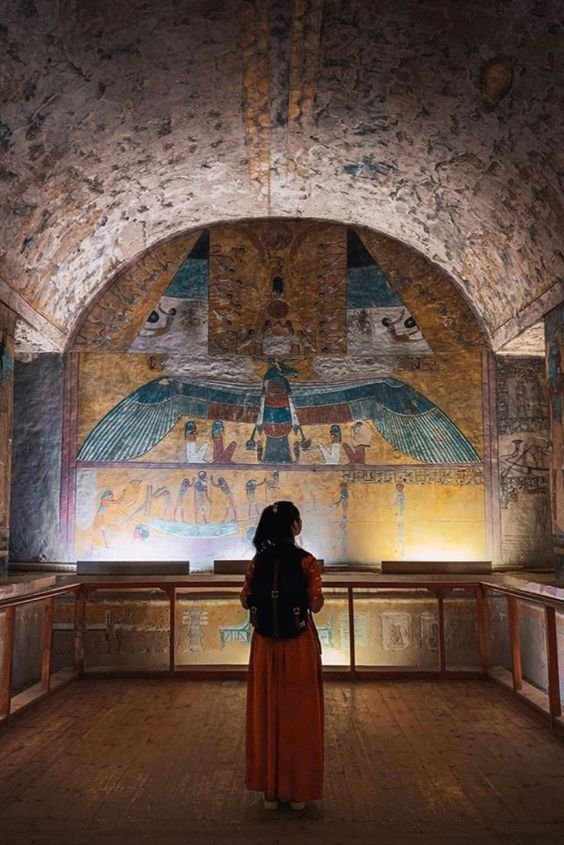
Tourism authorities regulate access to the tombs to ensure their preservation. Only a few tombs are open to the public at any given time, with a rotation system in place for restoration purposes. While a standard ticket allows entry to three tombs, visiting Tutankhamun’s tomb requires a separate ticket. Despite the additional cost, it offers a unique glimpse into ancient Egyptian history.
Tutankhamun’s tomb is renowned for its treasures, including the iconic gold mask, intricately carved sarcophagi, and a wealth of artifacts that provide insights into the life and death of the young pharaoh. The relatively small size of the tomb belies the richness of its contents, making it a must-see for any visitor to Luxor’s Valley of the Kings.
In addition to Tutankhamun’s tomb, several other notable tombs often included in the standard ticket are:
- Tomb of Ramses IV (KV2): Known for its well-preserved wall paintings and the large granite sarcophagus.
- Tomb of Merenptah (KV8): Features elaborate carvings and a series of large chambers.
- Tomb of Ramses III (KV11): Distinguished by its intricate decorations and lengthy corridors.
Each tomb offers a unique perspective on ancient Egyptian burial practices and artistry, with detailed carvings and colorful frescoes depicting various aspects of the afterlife.
Getting There and Where to Stay
Luxor’s Valley of the Kings is located on the west bank of the Nile River, near Luxor. Visitors can reach the site via Luxor International Airport, car, bus, train, or river cruise. Luxor offers a range of accommodation options, from upscale hotels on the east bank to charming guesthouses on the west bank, ensuring a comfortable stay for all visitors.
Travel Tips for Visiting Luxor’s Valley of the Kings
To make the most of your visit, consider the following tips:
Book a guided tour in advance to learn about the history and significance of each tomb.
Visit between October and April when the weather is cooler.
Wear comfortable footwear and modest, breathable clothing.
Bring a hat, sunscreen, and a refillable water bottle.
Respect site regulations, including photography restrictions and artifact preservation efforts.
Be prepared for additional fees for certain tombs and carry cash in Egyptian pounds.
A journey to Luxor’s Valley of the Kings offers a profound connection to ancient Egyptian history, allowing visitors to walk in the footsteps of pharaohs and experience the grandeur of their final resting places. The site’s ongoing research and conservation efforts ensure that future generations can continue to explore and appreciate this extraordinary archaeological treasure. Whether you are a history enthusiast, an archaeology buff, or simply a curious traveler, Luxor’s Valley of the Kings promises an unforgettable adventure through time.
Explore the mystical world of ancient Egypt with TravMe! Book your trip to Luxor’s Valley of the Kings today and immerse yourself in the wonders of this legendary site. Visit TravMe for more details and exclusive offers.
Business Information
– Phone: +201008833030
– Fax: +20233765560
– Email: info@travmetours.com
– Address: 5 Zohor St, Hadayek El Ahram, Elite Compound, Remaya Square, Giza, Egypt.
Read More
The Ultimate Guide to Exploring the Pyramids of Giza for 2024 | With Prices
Best Cairo Travel Guide – A Local’s Guide to Visiting Cairo | Updated 2024


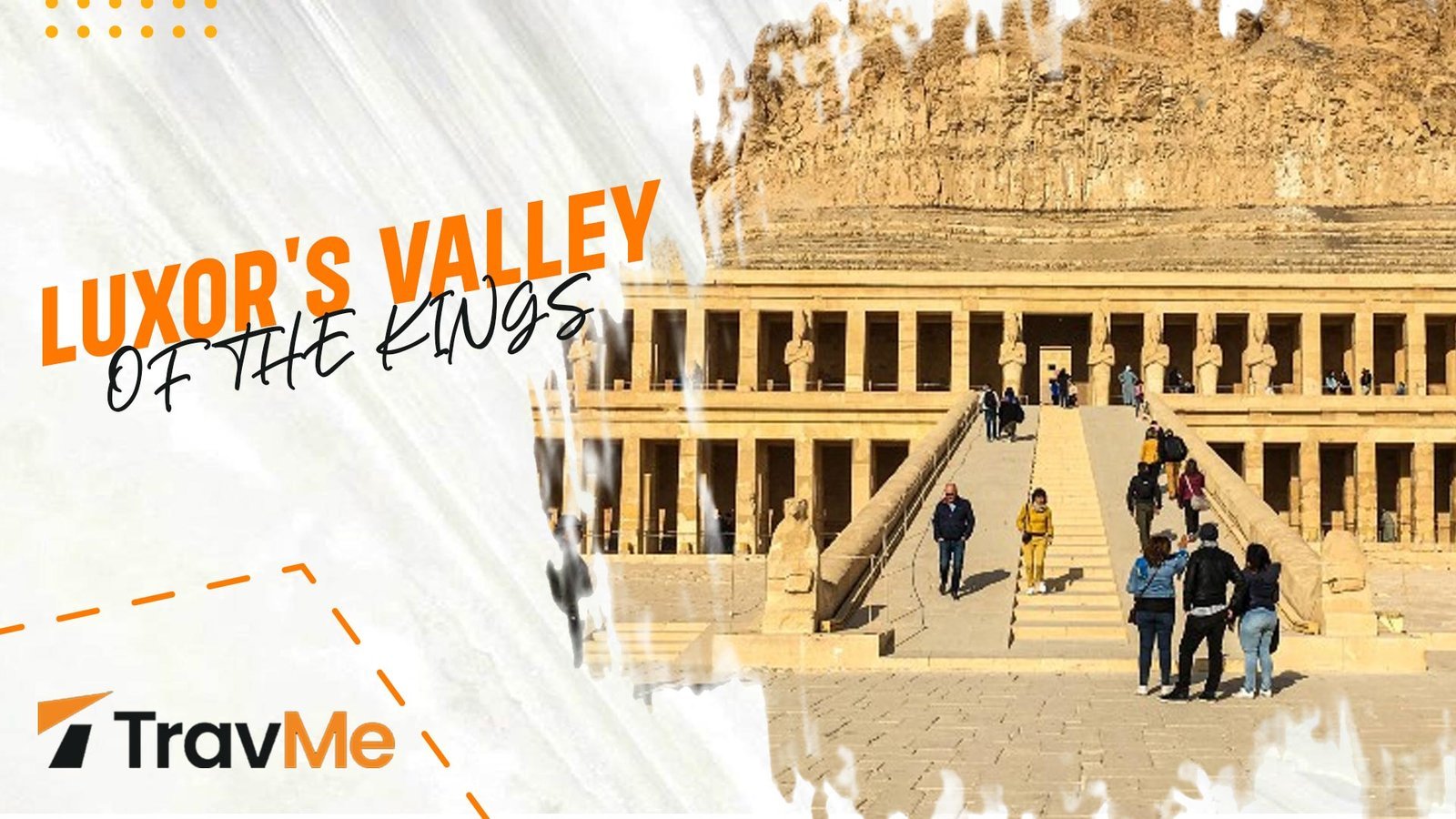
Comment (0)